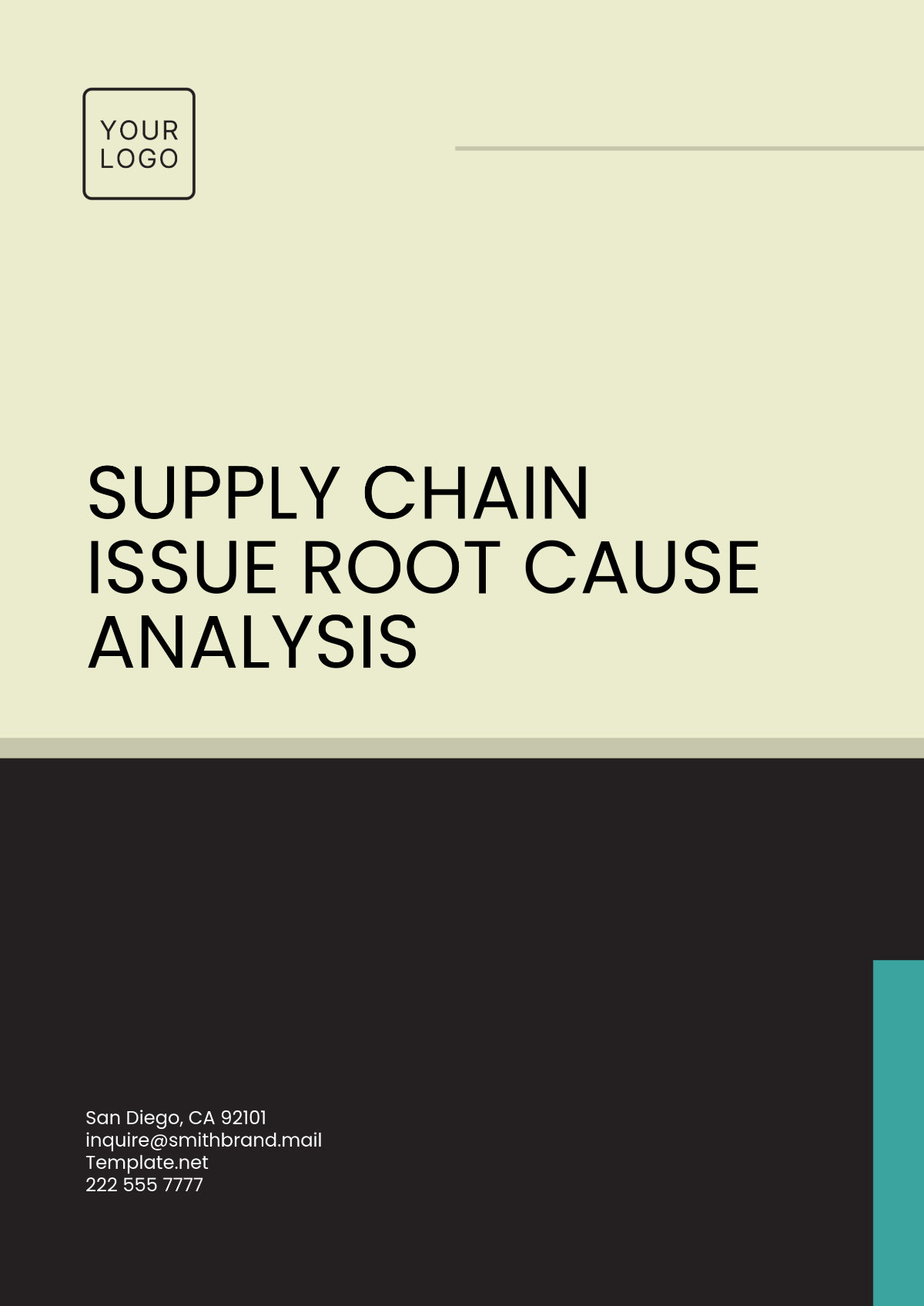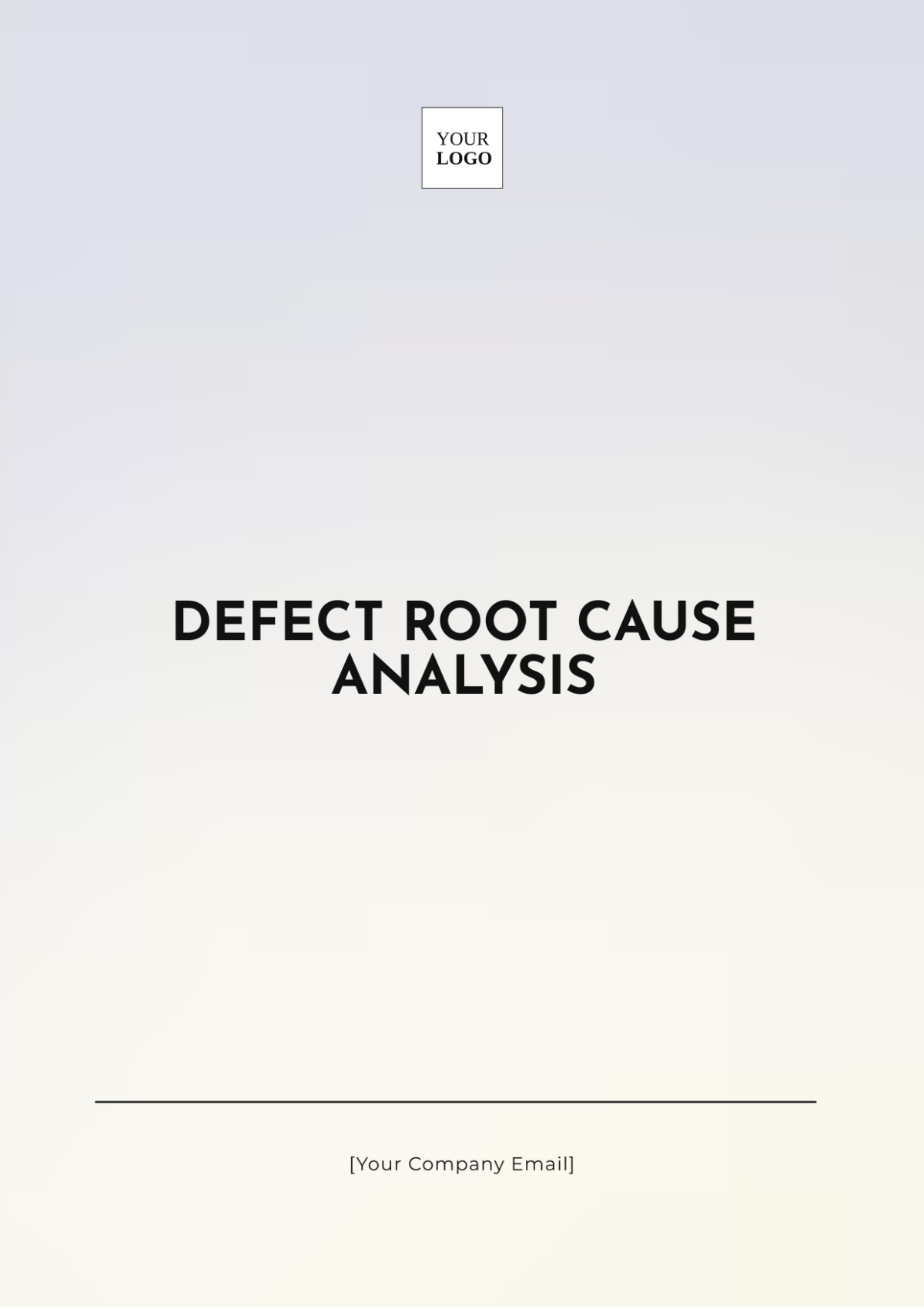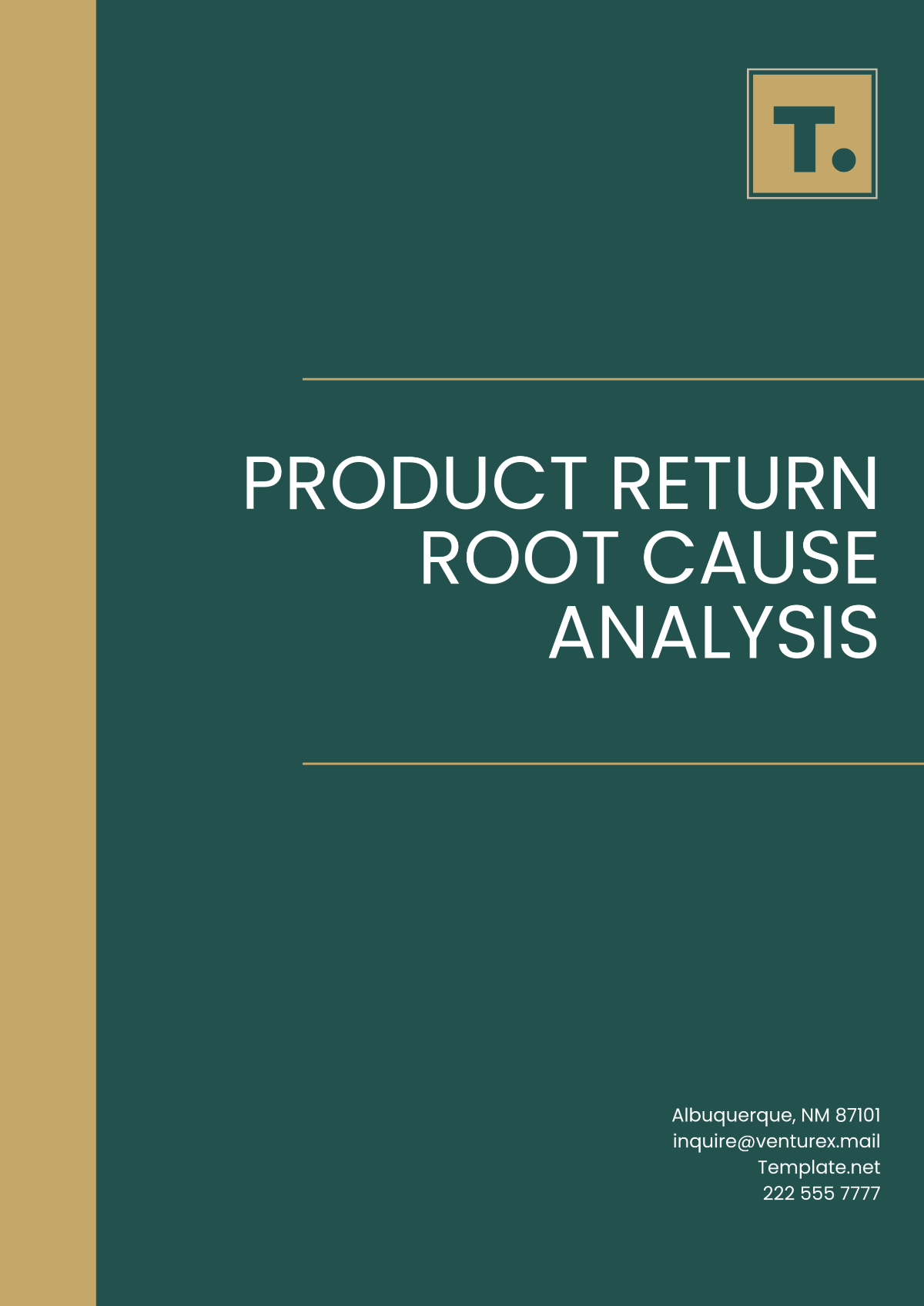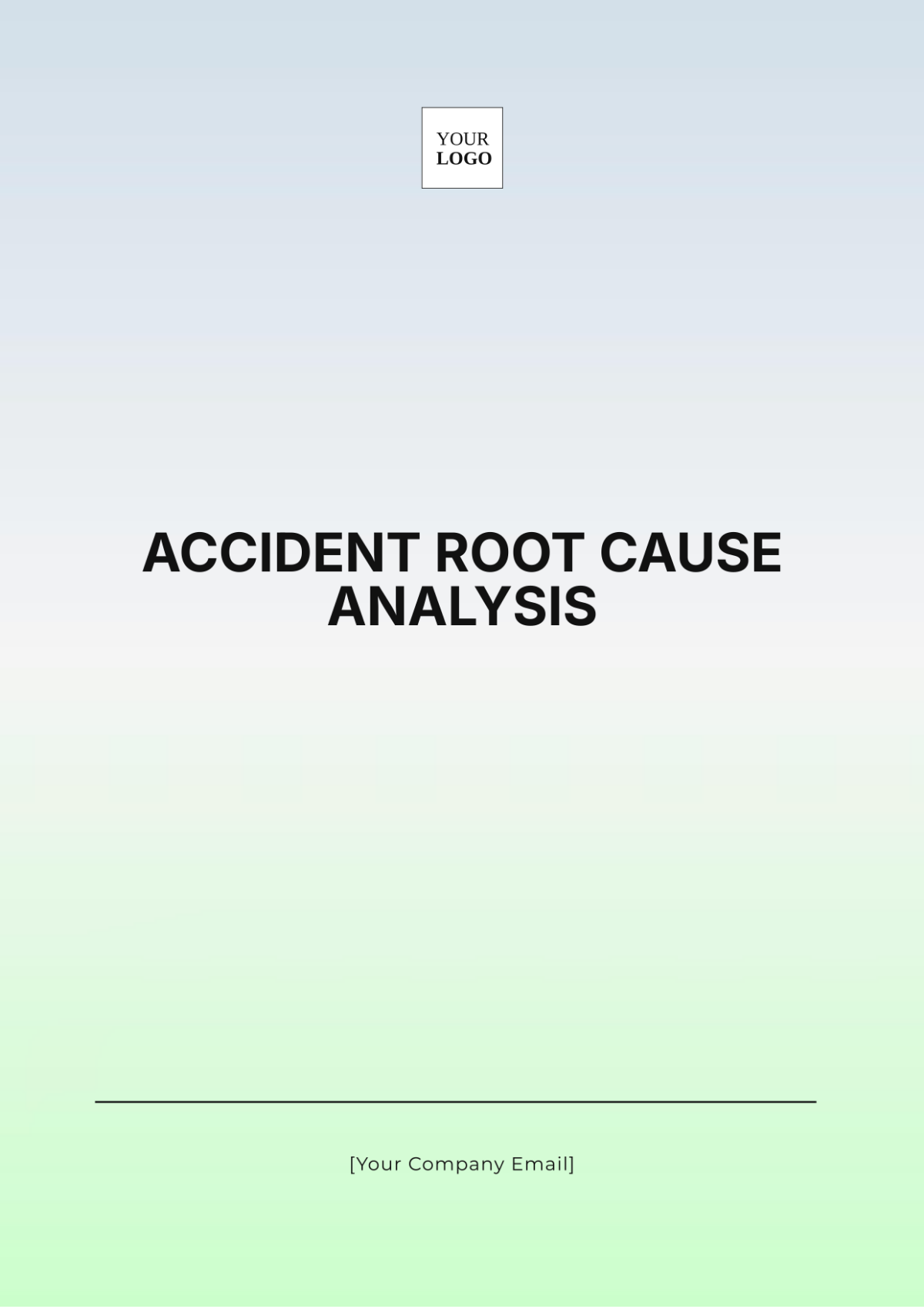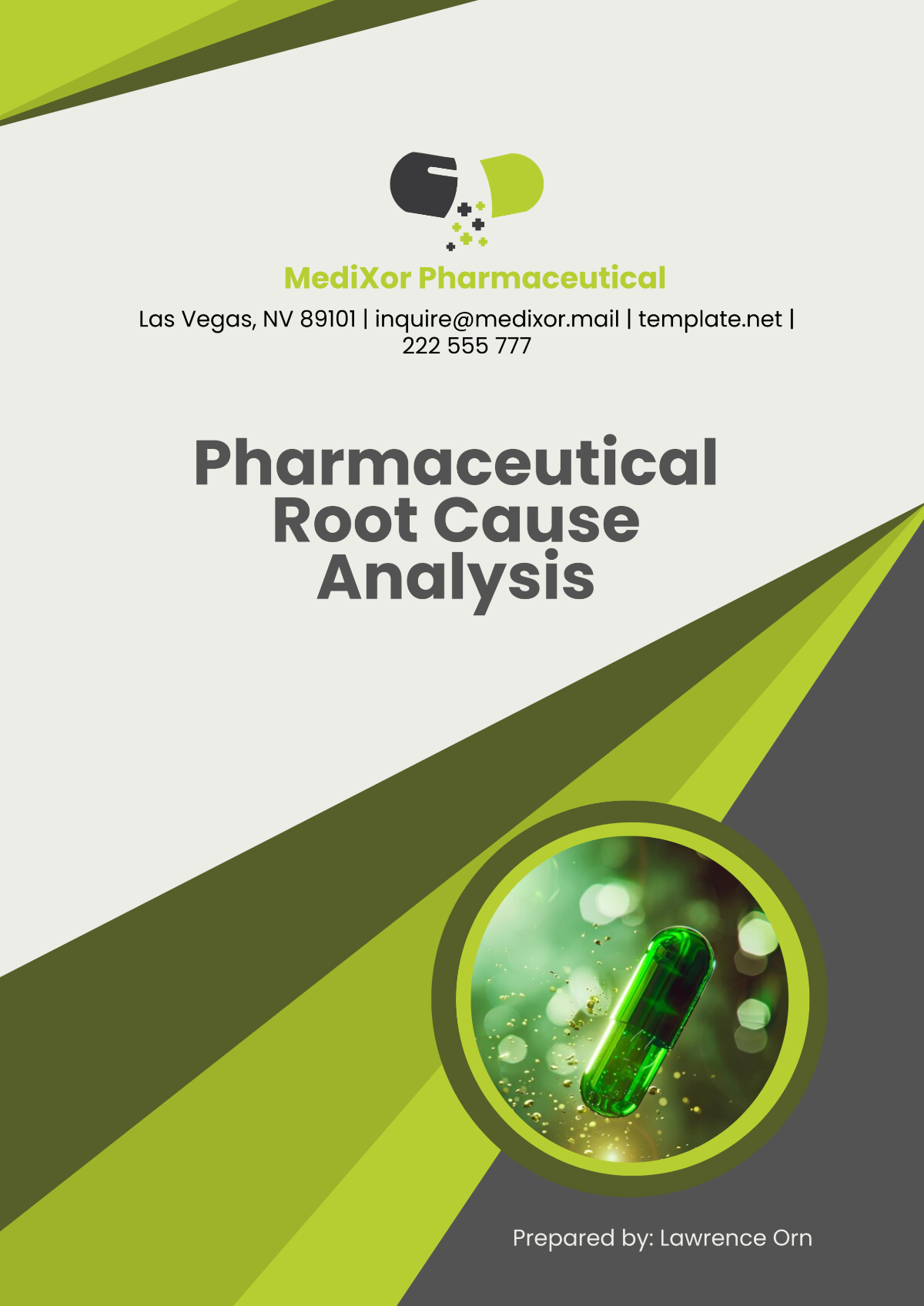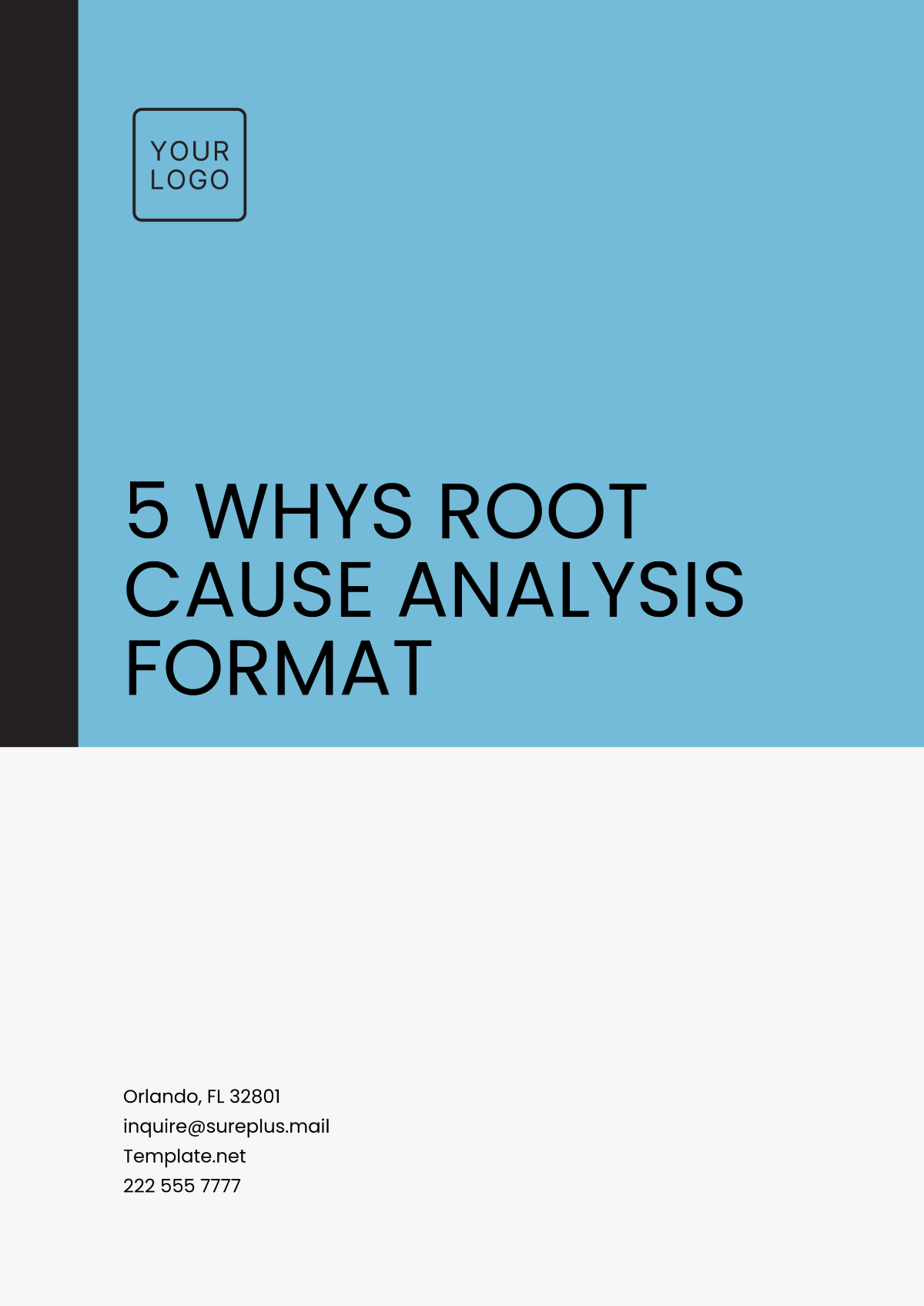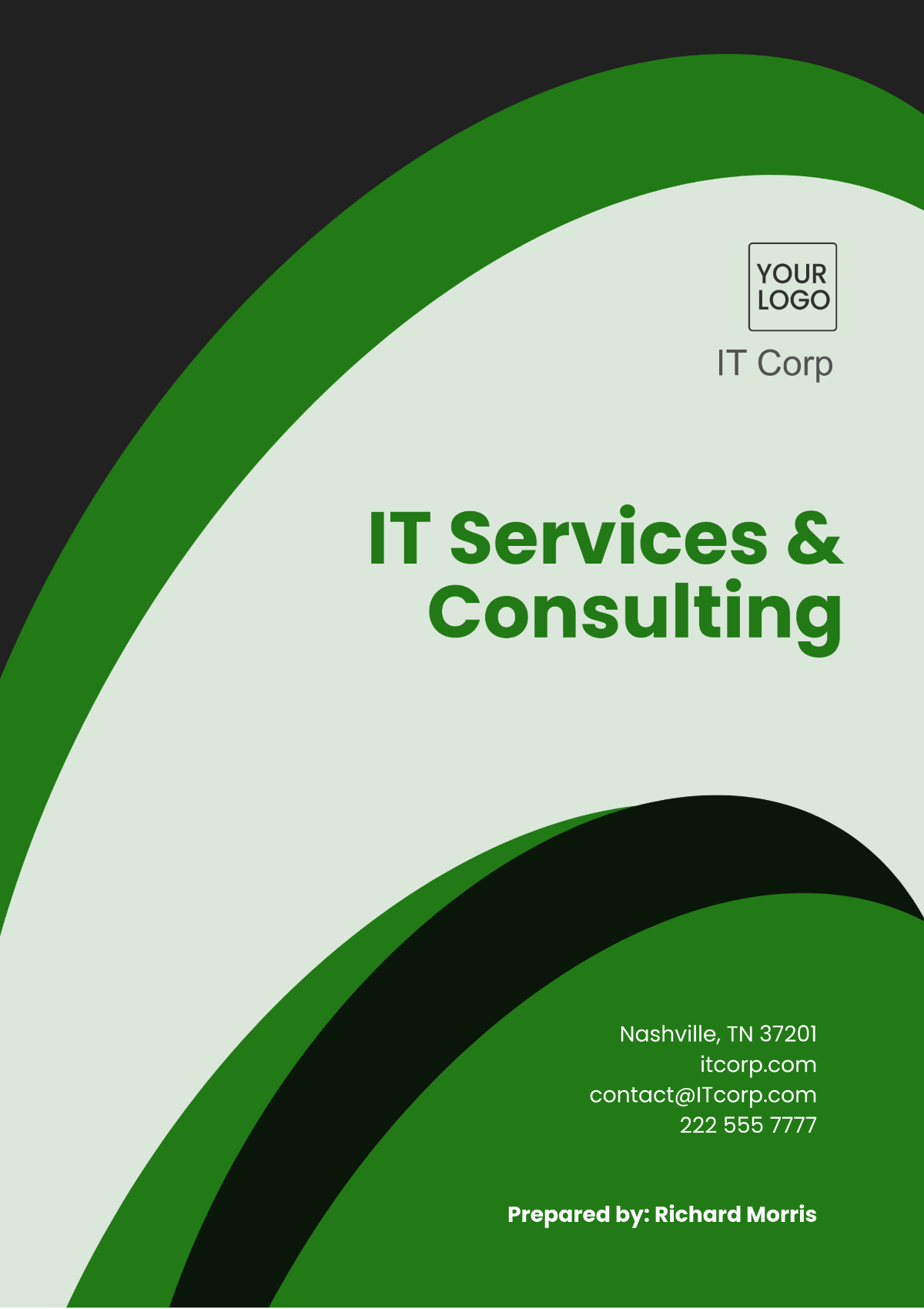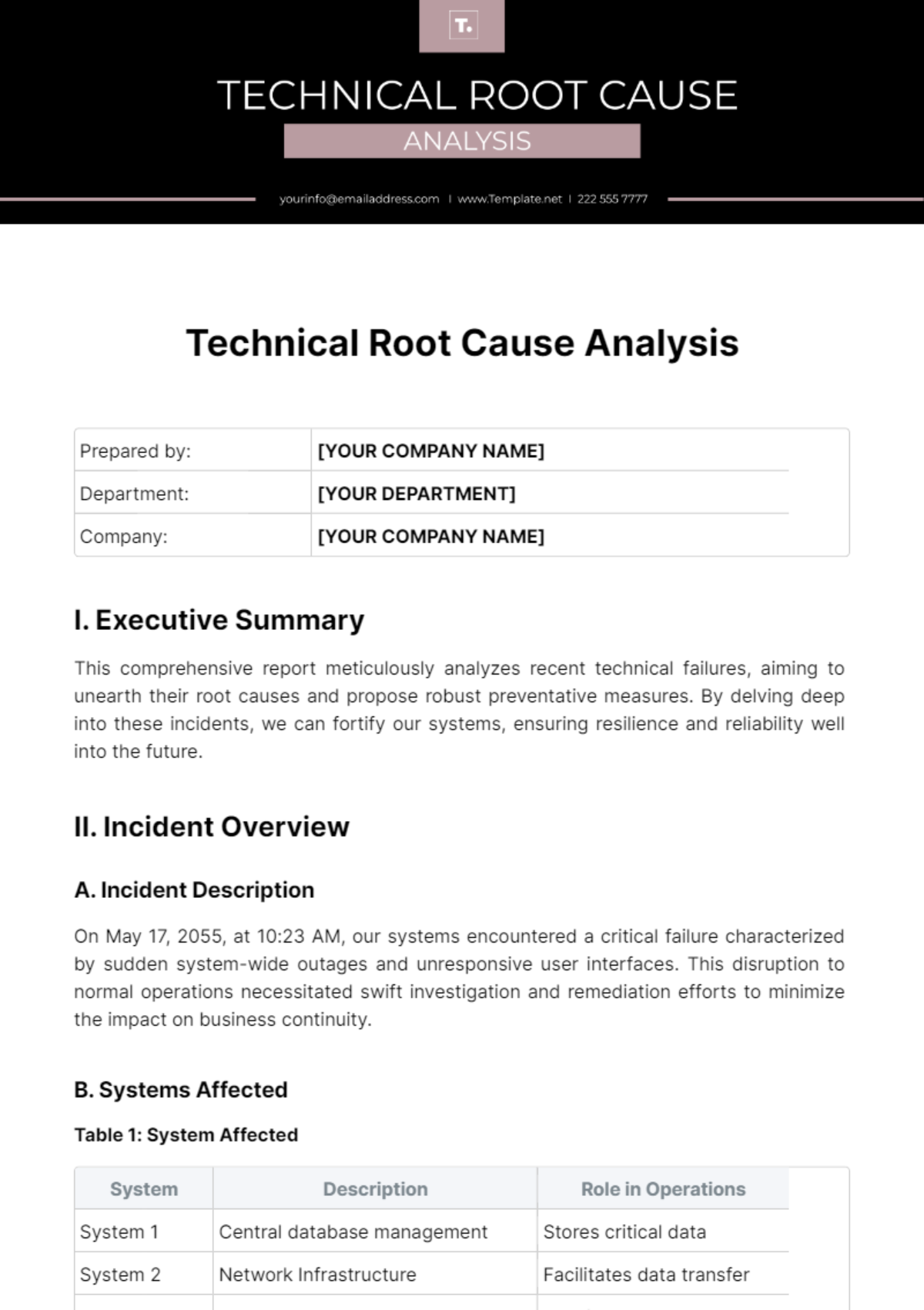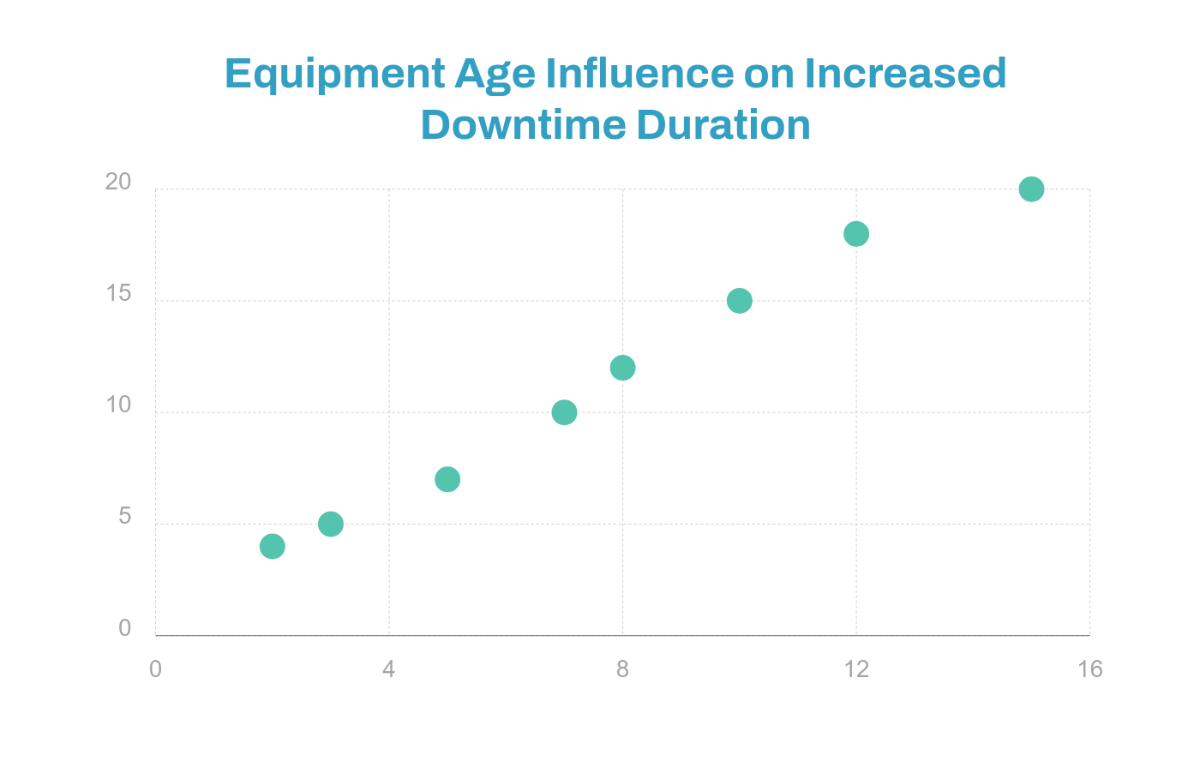Accident Root Cause Analysis
Prepared By: [YOUR NAME]
Date: April 11, 2060
I. Introduction
The purpose of this analysis is to examine the root causes of workplace accidents and determine how deficiencies in training and education may contribute to these incidents. By understanding these root causes, we can implement effective training programs to reinforce safety practices and minimize future risks.
II. Identification of Training and Education Gaps
A. Initial Assessment
An initial assessment involves reviewing current training materials, employee competencies, and accident reports to identify gaps in knowledge and practice.
Review of current training materials
Assessment of employee competency levels
Analysis of recent accident reports
B. Table: Summary of Training and Education Gaps
Area | Finding | Implication |
|---|---|---|
Training Duration | Insufficient time allocated | Employees may not fully grasp safety protocols |
Training Content | Lack of focus on key safety procedures | Employees may overlook critical safety steps |
Training Frequency | Irregular training sessions | Employees may forget important safety information |
III. Root Causes Linked to Training and Education
A. Findings from Accident Reports
A thorough review of accident reports reveals several recurring themes that indicate training and education deficiencies as root causes of accidents.
Improper use of machinery due to inadequate training
Lack of awareness of emergency procedures
Failure to use personal protective equipment (PPE)
B. Table: Linking Root Causes to Training Deficiencies
Root Cause | Training Deficiency | Recommended Action |
|---|---|---|
Improper use of machinery | Lack of hands-on training | Include practical sessions in training programs |
Lack of emergency procedure awareness | No refresher courses | Establish regular refresher training sessions |
Failure to use PPE | Inadequate emphasis on PPE importance | Incorporate PPE usage into daily safety briefings |
IV. Developing Effective Training Programs
A. Training Program Components
An effective training program should encompass the following components to address identified gaps and root causes:
Comprehensive curriculum covering all safety protocols
Hands-on practical sessions for skill development
Regular refresher courses to reinforce knowledge
Assessments to gauge competency and understanding
B. Detailed Training Schedule
Day | Activity | Description |
|---|---|---|
Day 1 | Introduction to Safety Protocols | Cover basic safety procedures and emergency response |
Day 2 | Machinery Handling | Hands-on training with machinery |
Day 3 | PPE Training | Focus on the proper use of personal protective equipment |
Day 4 | Emergency Drills | Conduct mock drills for various emergency scenarios |
Day 5 | Assessment and Feedback | Conduct competency assessments and provide feedback |
V. Implementation and Monitoring
A. Execution Plan
Implementing the training program requires a structured approach to ensure all employees receive the necessary education and training.
Develop detailed training materials and schedules
Assign qualified trainers and facilitators
Communicate training plans to all employees
Monitor training sessions and gather feedback
B. Training Implementation Checklist
Task | Status | Completion Date |
|---|---|---|
Develop training materials | In Progress | 01/10/2050 |
Assign trainers | Completed | 05/10/2050 |
Communicate training plans | Not Started | 10/10/2050 |
Monitor sessions | Not Started | Ongoing |
VI. Evaluation and Improvement
A. Continuous Improvement
Continuous improvement is crucial for the success of the training program. Regular evaluations and updates ensure that the program remains effective and relevant.
Conduct regular reviews of training materials and practices
Collect and analyze feedback from participants
Update training content based on emerging safety trends and incidents
Implement additional training modules as needed
B. Evaluation Metrics
Metric | Description | Frequency |
|---|---|---|
Participant Feedback | Comments and ratings from employees | Post-training |
Accident Reduction Rate | Decrease in accident occurrences | Bi-annual |
Knowledge Retention | Assessment results over time | Annual |
Training Completion Rate | Percentage of employees completing training | Quarterly |
VII. Conclusion
Effective training and education are critical components in the prevention of workplace accidents. By identifying training deficiencies and implementing structured programs, we can significantly reduce the likelihood of accidents and ensure a safer work environment for all employees.



